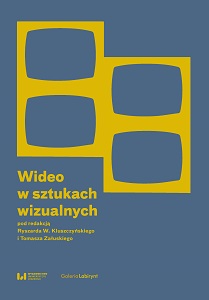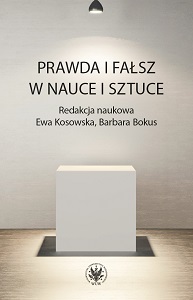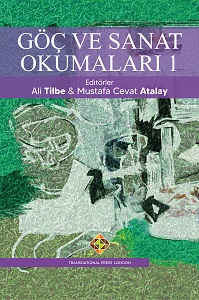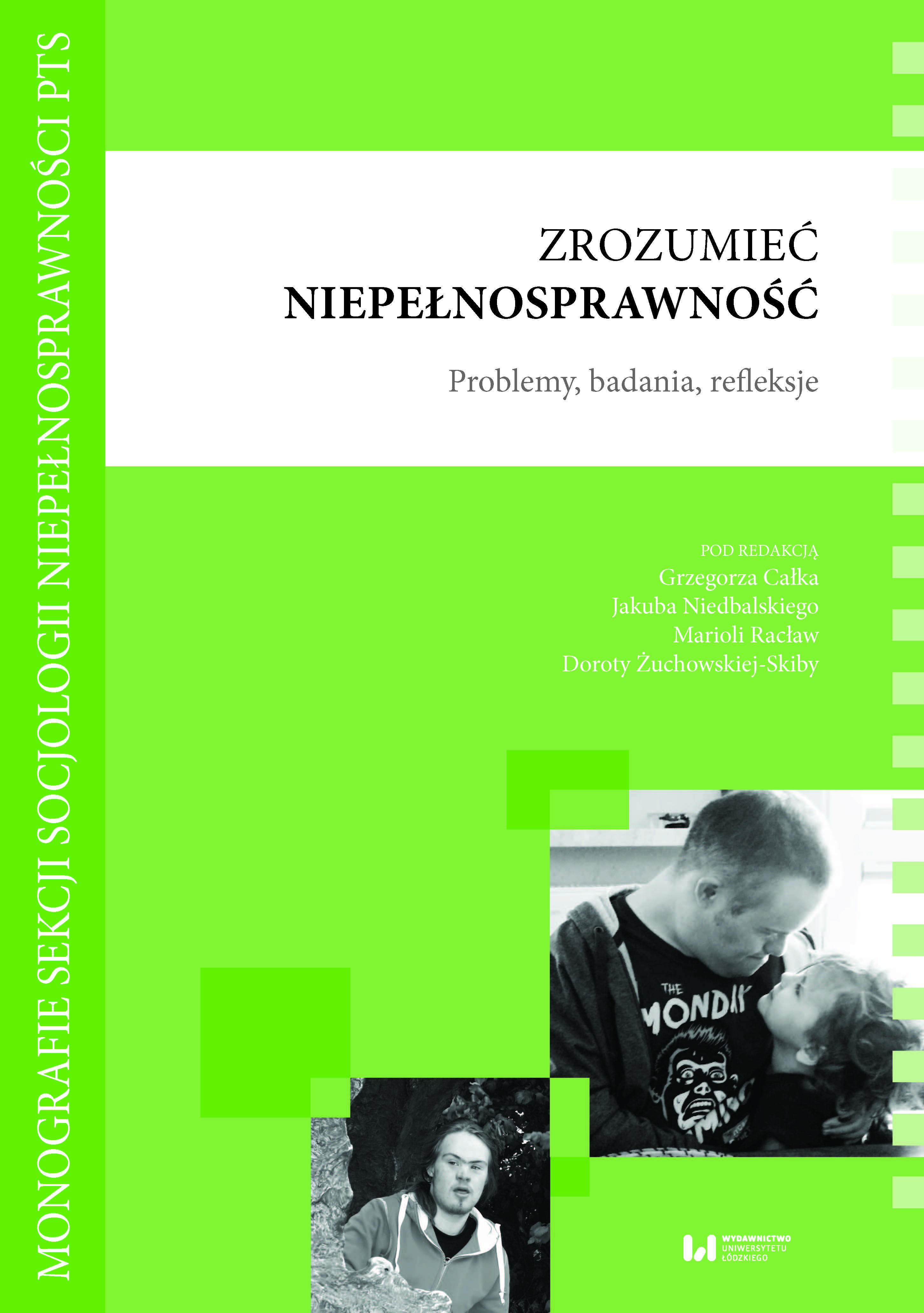
We kindly inform you that, as long as the subject affiliation of our 300.000+ articles is in progress, you might get unsufficient or no results on your third level or second level search. In this case, please broaden your search criteria.


The methodology and practice of editing Latin texts is dealt within this article as an example of a humanist's work combining activities scientific work with artistic creativity, including the technique of counterfeiting old works champions. The first part of the text is devoted to presenting the situation methodology in the field of text criticism in the 1960s and 1970s, when the author was a student and aspiring researcher. He then wondersover the reasons for the changes that took place in his editor's workshop in later ones decades, and finally addresses contemporary disputes on the role of a scientific publisher. He is particularly interested in interdisciplinary aspects of the problem.
More...
In the history of the so-called The gospel of Jesus' wife focuses on the problems related to the study of early Christian manuscripts. We have up to dealing with a manuscript of unknown origin, with a willing owner remain anonymous, the aspiration of the university institution to be public publicity, as well as the ideological perspectives of the researcher. The manuscript itself in the end it turned out to be a forgery. There was, however, a definite establishment of this fact impossible through laboratory tests and traditional palaeographic analyzes or historical. Only the professional journalist became involved and a diligently conducted journalistic investigation resulted in a difficult task rebuttal of evidence. It is the inclusion of this third method in the permanent repertoire manuscript verification methods could prove to be the boon that resulted from a four-year discussion.
More...
In this text, two concepts included in the two are analyzed in the works of Al-Ġazāli - the concept of dispersion (Arabic: tahāfut) and the concept of attachmentto authority (Arabic: taqlīd), which are described in Tahāfut al-falāsifa ("The Dispersion of the Philosophers") and in Al-Munqiḏ min al-ḍalāl (Righteous Scales. Rescue from getting lost). The author tries to show that Al-Ġazālī in his the criticism of philosophy focused not only on theoretical issues, but that one of the key parts of his criticism is also the practical issues concerningway of life. Pointing to specific examples of the use of the two of these concepts to overthrow philosophy, the author proposes a different interpretation the two later works of Al-Ġazāli mentioned above.
More...
Maciej Kazimierz Sarbiewski in his treatise De perfecta poesi, sive Vergiliuset Homerus, reflecting on the art of poetry, assures that the poet never lies. This privilege comes from the belief that the poet creates in imitation of God, as if giving a new existence to his heroes. That's why "Can talk about what is not as if it really existed." Poetic fictions are also often a veil hiding a precious truth to which one can to arrive using the appropriate allegorical interpretation.
More...
What does theater represent as a metonymy of literature and art in the turning centuries? The difficulty in applying Aristotle's principle of mimesis was known to French classicist theater. The problem of the elusiveness of the essence of things in times when post-truths were unknown, he presented both figuratively and practically baroque theater: from the theatrum mundi perspective, through the construction of 'theaterin the theater ” (Shakespeare, Pierre Corneille, Molière) showed another, disturbing one the bottom of the "norm of the day". The issue of appearances (Lesage, Marivaux) has brought about Diderot's aesthetic and moral reform, drama theoretician and practice. Radicalin their rebellion, the heroes of Schiller and Musset rejected such a compromise with an illusion, like the possibility of reform, while longing to embody the ideal pure love, ready to destroy others and even themselves if they had that ideal turn out to be a lie. Goodness and responsibility, this is, according to Fr. Tischner - the values on which the supported drama promises that Abel's choice will prevail Cain's election.
More...
The considerations concern the French view of the morality of recognized peoples for uncivilized - South Slavs living in the area of today Croatia and Montenegro. The problem of morality is analyzed primarily all in the context of the natural honesty attributed to peoples considered uncivilized. The analysis uses more than just testimonials French authors, but also French-language descriptions, popular in France days of enlightenment. This is especially true of the relationship between Alberto Fortis and Stefan Zanovic. These sources (shaping the images of Morlaks - Slavic shepherds living in the Dalmatian province - or Montenegrins) that were popular in the second half of the 18th century, they were combined with documents related to the French rule in Dalmatia (1806–1813). The analysis made it possible indicate what place in the Enlightenment discussion of morality civilized and savage peoples occupied communities Slavic families living on the outskirts of Europe at that time.
More...
The author deals with the attitude of the historian of ideas to the subject of his research, especially if they are in the form of an intellectual dispute or controversy. Presented the text contains a critical analysis of the possibility of objective occupation, non-valued attitude towards the subject of one's own research. Based on Aristotle's analyzes of rhetoric, the author shows that the presentation of the test results in writing involves an attachment to their positions and giving them a place and meaning in the context of the argument, which is equivalent to the evaluation operation. The empirical context of considerations is an autoanalytical case study: own research on modernism Catholic in Poland. On their basis, the author indicates another source of the impossibility objectivism hidden in the hermeneutic method of research. Gadamer's postulate of writing history again and again with consideration changing context leads to a strong emphasis in the study the world view of the researcher himself.
More...
The text is a reading of Hanna Arendt's Human Condition in terms of concept natality, showing the relationship between this book from 1958 and the previous one decades of the author's doctorate. The keystone here is the thought of Augustine of Hippo,whose subject matter Arendt translates into a modern language, striving for the ultimate overcoming the gnosis that stems from both Christianity and from modern times. The era of nihilism as modern gnosis degrades life to the biological process that Arendt contrasts with the "divinity of birth", or rather the latent sacredness of spontaneity. However, the operation was overcomegnosis is revealed only in a patient study full of nuances author's language. The hypothesis that Arendt works on concepts as "philosophical maranka”, allows the explanation of the statement that her secular anthropology is cryptotheology.
More...
Postmodernism negates the universality of values, thus emphasizing the role political power in creating truth. This creates a challenge for psychotherapy, in which the customer's perspective should be both recognized and inscribed into the theoretical framework of a given modality. In this chapter, the author undertakes reflections on the concepts of truth and falsehood in psychotherapy, presenting the theory of the dialogic self as a psychotherapeutic approach responding to this challenge. Comparing them to the dominant cognitive-behavioral approach, presents examples of practical areas of its application, in particular, problems related to the sense of identity and its continuity and the advantages and limitations of the therapeutic work metaphor as dialogue and narrative.
More...
The category of truth in irony should be seen through the prism of what the sender does he thinks and what he wants to achieve with his statement. However, a world of emotions and experiences irony recipients are also not insignificant for the interpretation meanings of non-literal language. The essay presents irony as a form of disguiseand camouflage. The irony oscillates between what is said, but not thinks and what you think but don't say. It balances between apparent truthand apparent untrue. Ironic criticism at the literal level does positive tone, ironic praise, and vice versa - negative. From ethical from the point of view, irony is not virtuous and can be clown. In the final part of the essay, the question arises as to whether irony has gender. The author replieson them, summarizing the conclusions of the research on the differences in methods understanding and use of irony/self-irony by men and women.
More...
The author presents the issues of adopting different perspectives and assigning mental states, with particular emphasis on their criteria adequate ascription. He pays particular attention to taking perspective another person and simulation theory. Uses the results of development research the ability to distinguish between perspectives and research on disorders of this ability in borderline personality disorder. The ability to distinguish one's own and other people's mental states was presented as an element of cognition social enabling adequate mentalization by adopting multiplicity perspectives and recognition of the possible existence of different representations of reality.
More...
The author's deliberations concern the issue of Renaissance-Baroque musical rhetoric. The sixteenth century in music is the development of the aesthetics of sound imitation (imitazionedella natura), which stabilizes the relationship between the word and music. The function of representing, inspired, becomes the main aspect of many works the ancient idea of properly combining words, harmony and rhythm. The music was there because in ancient times it was a metaphysical key and an important tool of education, in which a given composition was directly related to specific ones states of the soul, characters and emotions. The text continues this way of thinking in the era of humanism, where not only theorists, but also composers, performers and listeners assign specific figures have specific meanings. The author devotes a lot of space examples of musical use of various rhetorical and musical figures and how they function. He emphasizes, however, that despite the specific the universalization of the musical language is a system of rhetorical-musical figures extremely diverse and subject to individual contextual interpretation.
More...
The author deals with the problem of truth in music from the point of view of the current performances of historical early music. It looks at the various stages development of this phenomenon, asking questions about how much to strive for authenticity the performance or the approximation to the composer's intentions were the result search for historical truth, and how much truth about contemporaries was in the maesthetic attitudes of musicians and listeners.
More...
This voice in the discussion of musical truth shows two ways, which the representatives of contemporary Anglo-Saxon philosophy most often follow analytical. The first one is to search for truth/falsehood in the musical work itself and in its structures, the other is related to truth experience of music, and therefore - with sincerity, authenticity the performance itself (and especially with the performer's fidelity to the text music and with its faithfulness to itself). Finally, it appears a literary example of a debate on musical truth. For an aesthetic, it can be he is a source of reflection on the issues of metacriticism of the performance of a musical work, for the critic - an incentive to verify their own interpretation strategies.
More...
Starting from the problem of truth in painting, the author of the text dedicates it methodological reflection on inter-pictorial relations. Starting point for this idea there is a juxtaposition of two radically different artistic events: the erasure made by Rauschenberg in de Kooning's drawing and scratches of signatures in his own paintings by Henryk Stange. Both of these the interventions provoke an analysis of the transition from the intertextual viewing images for research optics, which - on the contrary - enhances material dimension of visual representation.
More...
The author analyzes the origin and specificity of 19th-century Polish historical and literary research. He compares the context of the birth of a new discipline in the partition Poland and in German states. History considered from this perspective literature appears to be an important factor contributing to the emergence of modern nations, and literary historians are presented as key authoritiesin the field of cultural past and present. The author is interested in the similarities and differences resulting, for example, from the fact that history in German states literature was an important academic discipline, while Polish authors they developed it in much more difficult conditions.
More...
The author takes up the problem of the truthfulness of museum exhibitions they refer to the tragedy of the Second World War. In this aspect, he values the value highly Majdanek, Auschwitz-Birkenau, Stutthoff and other museums created on the grounds of the former German camps. Based on own research conducted in 2016–2019 states that shaping the relationship between the truth of the place and the truth of the exhibition, skilful handling of authenticity and finding new forms of speaking to visitors is enormous a challenge facing exhibitors.
More...
İnsanlık tarihine baktığımızda savaşlar, doğal afetler, salgın hastalıklar, göç vb. birçok olaylar insanların hayatlarını derinden etkilemiştir ve etkilemeye de devam etmektedir. Bu olgulardan biri olan göç, insanlık tarihi kadar eskidir. İlk insanlar hayatlarını sürdürebilmek için yer değiştirmek zorunda kalmışlardır. Daha sonraları göçün değişik örnekleri yaşanmaya başlandı. Bunlar; insanların yaşadıkları yerlerden zorla koparılıp köle olarak uzak kıtalara çalıştırılmak üzere götürülmesi, uzak kıtaların sunduğu zenginlikler, savaşlar veya başka bir yerde yaşama isteği gibi sıralanabilir (Erkiner, 2016: 155). Özellikle 21. yüzyılda göç olgusunun arttığı görülmektedir. Göç kavramı, Türk Dil Kurumu Türkçe Sözlüğü’nde; “ekonomik, toplumsal, siyasi sebeplerle bireylerin veya toplulukların bir ülkeden başka bir ülkeye, bir yerleşim yerinden başka bir yerleşim yerine gitme işi, taşınma (TDK, Güncel Türkçe Sözlük) olarak tanımlanmıştır. Göç, coğrafi olarak bir mekân değiştirme nüfus hareketi olarak görülse de nedenleri ve sonuçları bakımından, bireylerin ve toplumların yaşamında Sosyo-kültürel, politik, ekonomik gibi geniş etkiler yaratan bir olgudur (Seyitvan,2017; Aktaş,2016; Akkaya, 1979).
More...
The subject of illness and disability has been explored by artists for a long time. Depending on the era, it was presented in different ways. Twentieth-century social movements, interested in emancipating otherness, shed new light on the perception of the human body and its causative capabilities. Currently, the artist is more a commentator of reality than its passive observer and disability is one of the most important subjects of art. The exclusion, which used to involve disabled people, seems to be passing nowadays, however the problem of ableism still exists. Contemporary artists refer to it in their works trying to face harmful stereotypes. The purpose of this article is to look at disability through the eyes of artists, to find its representations in works of art and to trace how the perception of the disabled body has changed, based on the aesthetics and canon of a given age – from the perfect body of antique to the social involvement of contemporary art.
More...